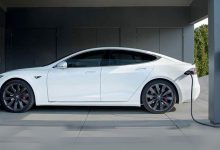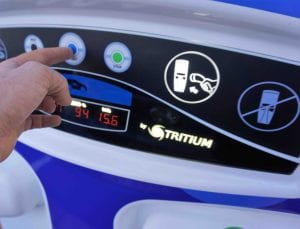The potential for electric vehicles as a part of the clean energy transition is more than just a form of zero emissions transport, and this is not lost on Tesla.
In fact, Tesla has done a complete turnaround on its previous position on vehicle-to-grid (V2G) technology (which was that according to CTO JB Straubel, V2G was not economically viable due to battery degradation).
We now learn that Tesla are already integrating vehicle-to-grid (V2G) technology in the electrical architecture of the Model 3.
That is hugely significant, not least because Tesla has already made some moves that suggest it is considering moving into the electricity market, having applied for a licence for undisclosed reasons in the UK.
It’s also significant because the Model 3 uses CCS2 plug standards, not CHAdeMO, which already supports V2G and is in use with the Nissan Leaf in Japan.
Instead of using an external inverter such as with the CHAdeMO standard, Tesla is using an internal converter which means that the outward flow of energy from the car can simply use a standard Type 1 or Type 2 AC plug.
According to a report from an electrical engineer who tore down a Model 3 for another car maker as reported by Electrek, the details are as follows:
“What I learned on reverse engineering the Model 3 charger, was that the design is fully bidirectional,” the engineer is quoted as saying.
“This means power can be converted from AC to DC the same way as the previous example, but also power can flow in reverse direction, coming from the battery and ending up on the AC side. This is known as DC to AC inverter, and when this technology is present in a vehicle, it is known as V2G (Vehicle to Grid).
“To complement this, the bidirectional design is replicated 3 times across the same PCB on the Model 3 charger. Another example of redundant design that assures a working process even if one of the circuits fails. Additionally, it is 3 phase design, so it can be used worldwide.”
Put simply, V2G technology allows electric cars to become a mobile battery that can store and discharge energy when and where needed. It has the potential to provide a curve-smoothing element to the ups and downs of grid demand, particularly as renewables play an increasing role in energy generation.
The inclusion of this technology in Tesla electric vehicles means that Tesla is future proofing its vehicles, which makes a hell of a lot of sense seeing as its battery researchers are also working towards a million mile battery to meet the lifespan of its cars.
But it also means a couple of other things, which to explain in more depth we ran past Jetcharge CEO Tim Washington, whose company is involved in getting V2G approved for the Nissan Leaf in Australia:
“What’s really interesting about the Tesla vehicle-to-grid thing is that they have pushed the inverter inside the on-board charger,” says Washington.
“This changes things because it does it inside the vehicle and [it means] you could potentially just use your home charger or a wall charger. It also pushes the cost [of including V2G or V2H] onto the car maker but drastically reduces the cost to set up V2G for end user,” he says.
To read the full version of this story – and view the photo gallery – on RenewEconomy’s electric vehicle dedicated site, The Driven, click here…
RenewEconomy and its sister sites One Step Off The Grid and The Driven will continue to publish throughout the Covid-19 crisis, posting good news about technology and project development, and holding government, regulators and business to account. But as the conference market evaporates, and some advertisers pull in their budgets, readers can help by making a voluntary donation here to help ensure we can continue to offer the service free of charge and to as wide an audience as possible. Thankyou for your support.










